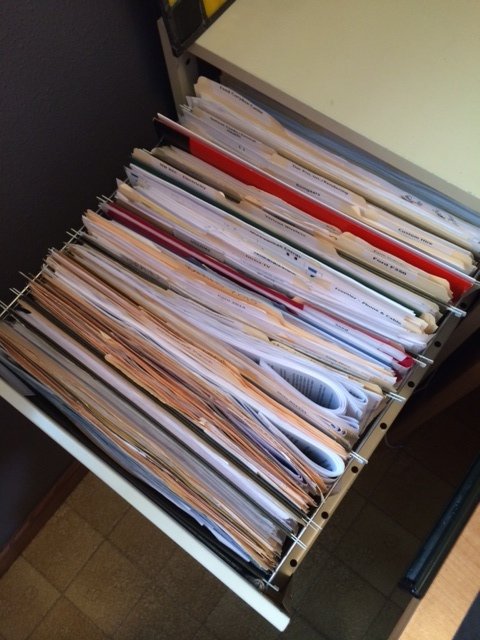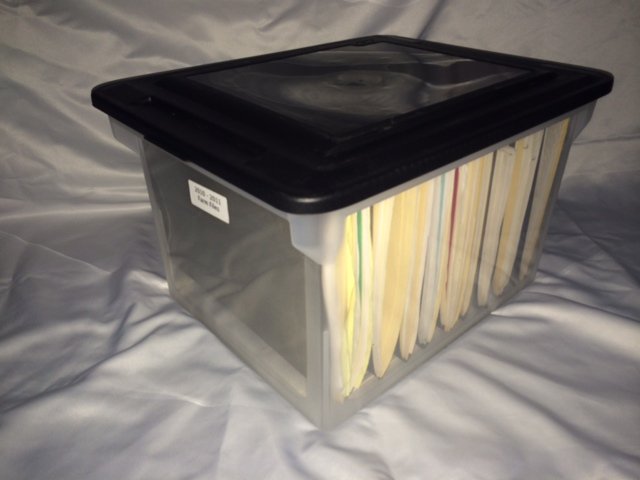Paper never stops coming into the house. And maintaining the paperwork is a task that never seems to end! But you can start the year off with a clean slate with the mindset of “out with the old and in with the new.”
Mission #2, if you choose to accept it, is purging paperwork into an archive.
This post assumes that you already have some sort of a filing system in place. If you don’t, read Filing 101 or a place to start. It’s never too late to start conquering your paperwork!
It’s important to turn over your files every year. You don’t need to keep years worth of bills and lease notices in your main file drawer.
Side note: If this is a dreaded task for you (which it is for most of us!), I’d recommend putting this on your calendar for a set date every January. Pour a glass of your fav, turn on some music, and set your timer for 30 minute increments with 5 minute breaks to keep you on task.
Onward.
If you’re a small business, farm, etc:
1. Purchase new file folders and a plastic file bin and label it for 2014
2. You will need to label the folders with the same labels as your current files (specific vendors, utilities, etc). I recommend typing and saving the labels so you can print duplicates each year.
3. Label the new folders and put in your plastic file bin.Now you’re ready for the fun part…
4. From your current file drawer, pull each file out one at a time and open it on the desk. Take out any previous year documents, leaving behind start up paperwork or account management paper (Ex: electricity. Pull out the 12 bills to archive, but leave the contract and online login tutorial) Place the purged papers into the newly labeled folder for 2014.
5. You must keep any paperwork that is necessary for taxes for 4-7 years depending on the type of document. (consult your accountant for exactly what to keep or shred) Keep in mind some papers you may just be able to shred and don’t need to keep at all.
6. Once you’ve sorted through each file folder, your drawer should look thin and your archive bin should be full–but nicely labeled!–so you can find what you need if you have to recall a document down the road. Be sure to label the tub and keep it in a dry location, such as a storage room or back closet. Do not keep it in an area that takes up your prime real estate! They are called archives for a reason.
If you’re an individual or family, you can purge out the same way as a small business, but it will be much simpler and you may be able to fit multiple years in one bin. If you don’t need most of your bills for tax purposes, you will be doing more shredding than actual archiving (again, consult with your tax woman to verify). Helpful records to archive are medical records and legal documents that you hardly need to access, but that are important keep.
Going paperless is always an option! ScanSnap and NeatDesk scanners are great for small businesses or individuals. But you will still need to archive your digital files to keep things in functioning order.
If you missed it, read Mission #1: keeping your kitchen counters clear.
Posted January 9, 2015





